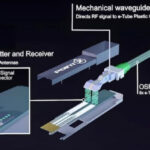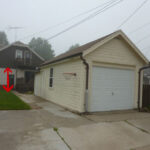When you are setting up or upgrading a network, one of the most common questions is: What is SFTP cable and how is it different from UTP, FTP, or STP? If you’ve ever been confused by these acronyms, you’re not alone. This guide will break down the meaning of SFTP cable, its shielding structure, and how it compares to other types of Ethernet cables.

SFTP Cable
SFTP Cable Meaning: What Does It Stand For?
SFTP stands for Shielded Foiled Twisted Pair.
It is a type of Ethernet cable that uses two layers of shielding:
Foil Shielding (F) – A thin layer of foil around each twisted pair to reduce electromagnetic interference (EMI).
Braided Shield (S) – An additional layer of woven copper braid covering all pairs for extra protection.
This dual shielding design makes SFTP cable one of the most robust options for environments where signal quality is critical.
In short:
UTP = Unshielded Twisted Pair (no shielding)
FTP = Foiled Twisted Pair (foil only)
STP = Shielded Twisted Pair (braid or foil, usually one layer)
SFTP = Shielded + Foiled (foil around pairs + braided overall shield)
How Does SFTP Cable Work?
The shielding in SFTP cables serves two main purposes:
Block external interference: Prevents signals from nearby power cables, machinery, or wireless devices from disrupting data transmission.
Prevent crosstalk: Reduces interference between the twisted pairs within the cable itself.
This makes SFTP especially effective in high-interference environments like data centers, industrial automation, broadcasting, and medical equipment.
SFTP vs FTP Cable: What’s the Difference?
A common question is SFTP vs FTP cable – which is better?
FTP Cable (Foiled Twisted Pair)
Each pair or the entire bundle is wrapped in a foil shield.
Offers good EMI protection at a lower cost.
Suitable for office or residential networks where interference is moderate.
SFTP Cable (Shielded Foiled Twisted Pair)
Has both foil shielding per pair and a braided shield around all pairs.
Provides maximum protection against EMI and crosstalk.
Best for high-performance, mission-critical networks.
👉 In short: SFTP is more secure and interference-resistant than FTP, but also more expensive and less flexible.
SFTP vs STP vs UTP: Quick Comparison
| Cable Type | Shielding Method | EMI Protection | Cost | Typical Use |
|---|---|---|---|---|
| UTP | None | Low | $ | Homes, offices with minimal interference |
| FTP | Foil shield | Medium | $$ | Offices, small businesses |
| STP | Braid or foil | High | $$–$$$ | Industrial, business networks |
| SFTP | Foil per pair + braid overall | Very High | $$$ | Data centers, hospitals, industrial automation |
When Should You Use SFTP Cable?
You should consider SFTP cable if:
Your network is installed near heavy electrical equipment or power lines.
You need maximum speed and signal reliability (e.g., 10 Gigabit Ethernet).
You are wiring data centers, broadcast systems, or medical facilities.
Compliance with EMI/EMC standards is required in your industry.
Conclusion
SFTP cable is not just another networking option—it’s a premium shielded Ethernet solution that ensures strong, stable, and interference-free connectivity. While it costs more than UTP or FTP, it is the best choice for high-interference and high-performance environments.
If you’re building a data center, industrial network, or mission-critical system, investing in SFTP cable will deliver long-term reliability and performance.





